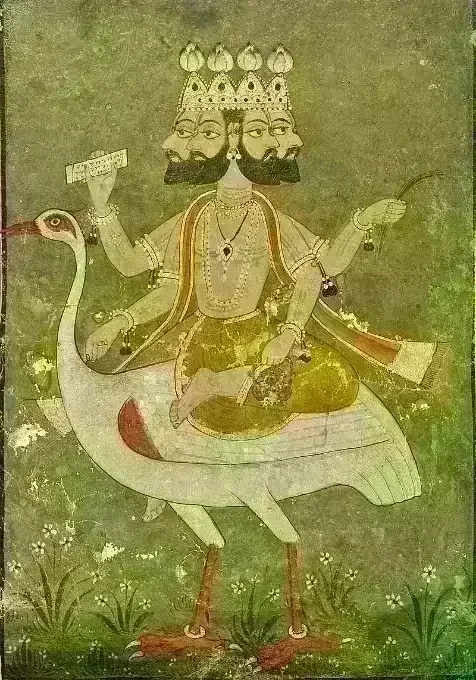Brahma

Brahma occupies a distinctive place in Hindu theology as "the Creator" within the Trimurti, the divine trinity completed by Vishnu and Shiva. Associated with creation, knowledge, and the sacred Vedas, this Sanskrit deity (ब्रह्मा, Brahmā) features prominently in Hindu creation myths. Some Puranic texts describe his self-creation within a golden cosmic egg called the Hiranyagarbha.
Though scholars often link Brahma with the Vedic deity Prajapati, his religious significance has followed an intriguing historical trajectory. Despite having his own sect and considerable prominence in the post-Vedic period, Brahma's importance declined markedly by the 7th century. The rising worship of Vishnu, Shiva, and Mahadevi relegated him to a secondary creative role, with some traditions even depicting him as a creation of these more dominant deities.
Traditional iconography portrays Brahma as a red or golden-skinned man with four bearded heads and four hands. His heads, representing the four Vedas, face the cardinal directions. He sits upon a lotus flower and travels on his vahana (mount) - a hamsa, variously interpreted as a swan, goose, or crane. Hindu texts describe his offspring as Manasaputra, or mind-born children.
In modern Hinduism, Brahma receives little active worship compared to his Trimurti counterparts. While ancient texts honor him extensively, he lacks a significant devotional sect in India today. His temples are rare on the subcontinent, with the Brahma Temple in Pushkar, Rajasthan standing as the most renowned. Interestingly, some Brahma temples exist beyond India's borders, including Bangkok's Erawan Shrine, which has gained particular significance among Thai Buddhists.